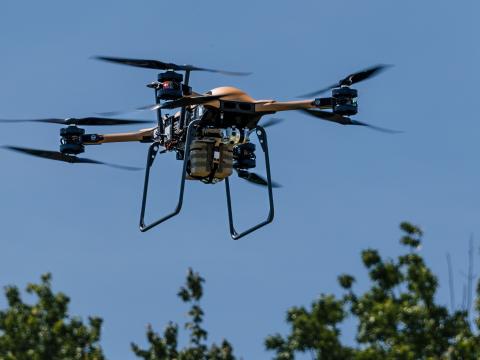President's Commentary: Building the Modern Marine Corps
Throughout its rich history, the U.S. Marine Corps has developed many significant warfighting concepts that remain valid today. With adjustments for unforeseen new technologies and capabilities, these forward-looking concepts serve the Marine Corps and the nation well.
Throughout its rich history, the U.S. Marine Corps has developed many significant warfighting concepts that remain valid today. With adjustments for unforeseen new technologies and capabilities, these forward-looking concepts serve the Marine Corps and the nation well.
The amphibious force represented by the Marine Corps offers both a warfighting and a cooperative engagement capability that provides the nation with many broad options across a full spectrum of operations—from humanitarian to diplomatic, through several levels of conflict.
In today’s dynamic environment, with the preponderance of the world population moving to the littorals and vulnerable key strategic lines of communication, “operational maneuver from the sea” stands out. The capabilities derived from the F-35, the extended reach and flexibility of the V-22 Osprey, enhanced joint intelligence, surveillance and reconnaissance (ISR), along with other complementary joint capabilities riding on a robust and resilient network, will enable the use of the sea as maneuver space in supporting our national interests.
It will give the Marines the flexibility to fight with smaller, less vulnerable yet highly capable and lethal units that can be disaggregated from the larger whole, operating from different platforms while dispersing their forces among multiple engagements at a time and place of their choosing. Precision targeting and maneuvering become more effective because overhead assets can be integrated rapidly into the targeting process, and information provided by the joint command, control, communications, computers, intelligence, surveillance and reconnaissance (C4ISR) network can be shared across the force. The commander is able to coordinate and direct maneuver and employ supporting arms much more rapidly and effectively. These dispersed forces can be brought together at sea as well as ashore, which gives the Corps many options for maneuver. In short, the commander’s ability to command and control is enhanced.
The Marine Corps needs new technologies to ensure its concepts and advanced capabilities are optimized. For example, the Marines have a need for lightweight, highly efficient and dependable expeditionary energy sources. Forces that break up into smaller units and travel quickly and lightly cannot afford to be burdened with dragging bulky and unwieldy power sources into combat. A small, highly dependable energy package that eliminates the need for hauling batteries, a cumbersome burden, will allow Marine forces to move into areas that otherwise would require a restrictive logistics footprint.
Lessons learned from the last decade of war have shown the value of satellite communications capability at unit levels not previously envisioned. This has improved intelligence, lethality and tactical and operational effectiveness at the company and battalion levels.
To enhance its flexibility and provide added capability, the Marine Corps must focus on effectively integrating intelligence, network operations, network defense, network exploit and network attack in cyberspace operations. These five functions cannot be stand-alone; they must be fully integrated. Some disciplines, such as intelligence, are crosscutting in support of other functions. In turn, this new cyber capability must be fully developed into operating concepts and practice. Cyber can be another arrow in the quiver that is potentially less physically destructive when called for, yet highly effective.
Operationally, the Marine Corps must be fully integrated with the Navy. The almost 15 years the Marines have spent in Southwest Asia, primarily as a ground force, have allowed that capability to atrophy. A generation-plus of Marines and sailors never has conducted an amphibious operation, which is a highly complex manner of warfighting. This will require upgrading C4ISR capabilities on amphibious ships as well as for Marines on the ground. Fielding and integrating C4ISR capabilities for naval forces afloat must mirror those used ashore.
Driven by the paucity of amphibious shipping, naval forces need a lightweight, transportable and robust C4ISR capability that can be fully integrated into any platform in the maritime base—Marine Corps, Navy or commercial. This will permit the Marine Corps to better integrate air and surface capabilities at the sea base.
When one looks at the Marine Corps, one sees an increased emphasis on the ability and need to partner and integrate more closely with special operations forces (SOF). Each of these two groups can gain much from the respective capabilities of the other. Further, the SOF community has an acquisition process that is much more agile than the traditional Defense Department process, and many SOF-developed capabilities—particularly from a C4ISR, logistics and weapons perspective—fit well into Marine Corps operating concepts. Closer coordination between the Corps and the SOF community will pay great dividends for both forces going forward.
Ultimately, budgetary concerns cast a shadow over all of these modernization efforts. As one looks at current and potential hot spots around the world, clearly the Free World is in the most challenging of times. The nation must have a robust naval capability to support its global interests. Both the Navy and the Marine Corps must be resourced to provide the capabilities that are needed.



Comments